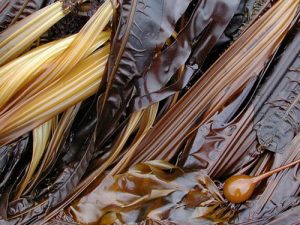
A second edition of the Field Guide to Seaweeds of Alaska is now available.
The award-winning guide was produced by NOAA Fisheries, University of British Columbia scientists, and Alaska Sea Grant.
The updated field guide includes photos and descriptions of more than 100 common seaweeds found in Alaska, including seagrasses and common marine lichens.
More than one third of the guide contains new content since the last printing of this field identification guide 10 years ago.
Updated Information
Seaweed Species Information
Several updates are related to new genetic techniques of seaweed classification and the identification of new species.
“Simply doing a reprint would not have made sense with the many changes in seaweed classification,” said Mandy Lindeberg, author, Alaska Fisheries Science Center biologist and Program Lead, Gulf Watch Alaska.
The most compelling change in seaweed taxonomy has been the widespread adoption of molecular techniques like DNA sequencing.
This has significantly refined species identification and revealed previously unknown genetic diversity within seaweed groups.
As a result, scientists now have a better understanding of evolutionary relationships. In some cases, they have reclassified species based on genetic data rather than just on their structure or form.
There are approximately 550 species of seaweeds known to occur in Alaska. Some are only found in Alaska, and more are being discovered as its extensive and remote coastline is explored. This field guide contains mainly common Alaskan seaweeds but a few are worth highlighting.
In 2006, Lindeberg discovered a new genus and species of kelp, known as the golden V kelp from the Aleutian Islands. This kelp is only found in Alaska and appropriately highlighted on the cover of the field guide.
Species pages include both digital images of herbarium pressings and photographs of seaweeds in their natural habitat to help with identification.
Seaweed Mariculture
Another important reason for producing a second edition has been to meet the needs of a growing industry for shellfish and seaweed mariculture in Alaska.
Seaweed mariculture is expanding quickly in Alaska and future growth is expected. According to NOAA’s Office of Aquaculture, farmers in Alaska produced more than 112,000 pounds of sugar, ribbon, and bull kelp in 2019, a 200 percent increase over the state’s first commercial harvest in 2017.
In Alaska, seaweed mariculture often consists of anchored lines seeded with young seaweed, grown near the surface of the ocean.
The second edition of the Field Guide to Seaweeds of Alaska is available at the Alaska Sea Grant Online Bookstore.
source: Alaska Fisheries Science Center
Leave a Reply
You must be logged in to post a comment.